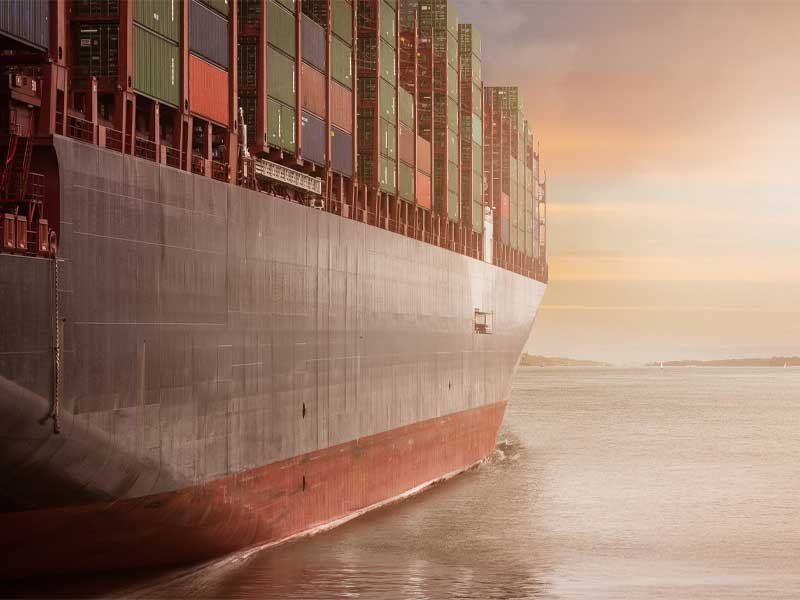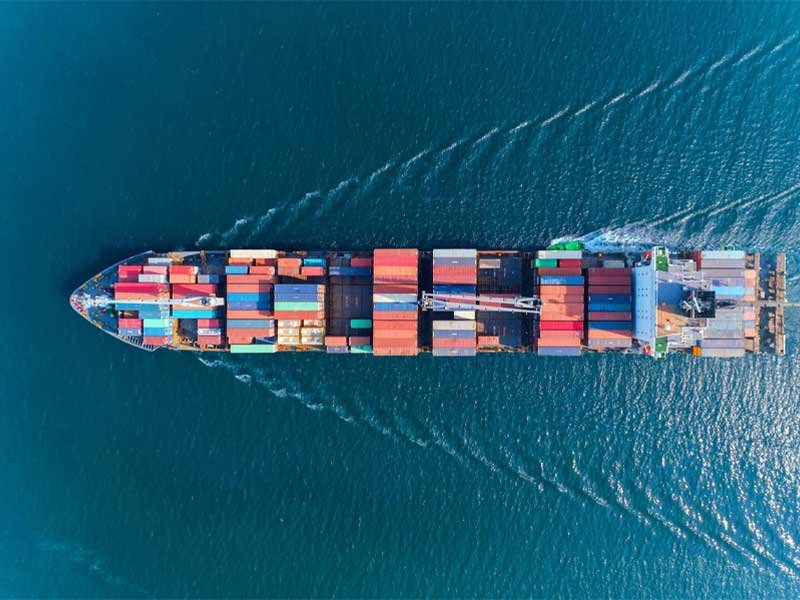
In the vast expanse of our oceans, a silent revolution is underway, powered by the colossal vessels known as container ships. These engineering marvels crisscross the globe, connecting distant shores, and serving as the backbone of global trade. In this article, we delve into the fascinating world of container ships, exploring their design, operation, and the vital role they play in shaping the modern economy.
The Evolution of Container Shipping
The concept of containerized shipping revolutionized the transportation industry in the mid-20th century. Prior to the advent of containerization, goods were loaded and unloaded individually, a labor-intensive and time-consuming process. Containerization standardized cargo units, enabling seamless transfer between ships, trucks, and trains. This innovation drastically reduced shipping costs, accelerated transit times, and transformed the dynamics of international trade.
Design and Construction
Container ships are engineering marvels designed for efficiency, reliability, and maximum cargo capacity. These vessels come in various sizes, from small feeder ships to ultra-large container vessels (ULCVs) capable of carrying over 20,000 twenty-foot equivalent units (TEUs). Their hulls are optimized for hydrodynamics, minimizing drag and fuel consumption. Advanced propulsion systems, including diesel-electric and dual-fuel engines, ensure optimal performance and environmental sustainability.
Operation and Navigation
Operating a container ship requires precision, skill, and coordination. A typical voyage begins at a port, where containers are loaded onto the ship using towering gantry cranes. Once underway, the ship’s crew navigates complex shipping lanes, navigating through crowded waterways and adverse weather conditions. Advanced navigation systems, including GPS, radar, and automated steering controls, enhance safety and efficiency during transit.
Cargo Handling and Stowage
Efficient cargo handling is critical to maximizing the utilization of container ships. Onboard container terminals, known as container yards, facilitate the orderly storage and retrieval of containers. Ingenious stowage plans optimize space utilization, ensuring that every nook and cranny of the ship’s cargo holds is filled. Advanced loading algorithms take into account factors such as weight distribution, stability, and accessibility, minimizing the risk of accidents and cargo damage.
Challenges and Innovations
Despite their efficiency, container ships face numerous challenges, including piracy, geopolitical tensions, and environmental concerns. The industry is continuously innovating to address these challenges, with initiatives such as slow steaming to reduce fuel consumption, ballast water treatment systems to prevent invasive species spread, and alternative fuels such as LNG and hydrogen to reduce emissions.

The Future of Container Shipping
As the global economy continues to expand, the demand for container shipping is expected to grow exponentially. The industry is adapting to meet this demand, with investments in larger, more efficient vessels, automation technologies, and digitalization initiatives. However, sustainability remains a key focus area, with efforts underway to develop zero-emission propulsion systems and eco-friendly shipping practices.
Read more: Logistic Companies in Iran
The Top 10 Largest Container Ships in the World
The maritime industry is home to some of the most impressive engineering feats, and nowhere is this more evident than in the realm of container ships. These behemoths of the sea represent the pinnacle of modern shipping technology, capable of carrying vast quantities of goods across oceans and continents. In this article, we explore the top 10 largest container ships in the world, marveling at their sheer size and capacity.
MSC Gülsün:
Topping the list is the MSC Gülsün, owned and operated by Mediterranean Shipping Company (MSC). Built in 2019, this mammoth vessel measures an astonishing 400 meters in length and can carry over 23,000 twenty-foot equivalent units (TEUs). With its cutting-edge design and efficient propulsion system, the MSC Gülsün is a true titan of the seas.
MSC Samar:
Another impressive vessel from MSC, the MSC Samar ranks among the largest container ships globally. Constructed in 2021, it boasts a length of 399.9 meters and a capacity of over 23,000 TEUs. With its state-of-the-art amenities and advanced cargo-handling capabilities, the MSC Samar exemplifies the next generation of container shipping.
HMM Algeciras:
Owned by South Korean shipping company Hyundai Merchant Marine (HMM), the HMM Algeciras is one of the largest container ships ever built. Launched in 2020, it measures 399.9 meters in length and has a capacity exceeding 23,000 TEUs. As a testament to maritime engineering prowess, the HMM Algeciras represents a significant milestone in container ship design.
Ever Ace:
Operated by Taiwanese shipping company Evergreen Marine, the Ever Ace is a true marvel of modern engineering. Built-in 2021, it stretches 400 meters in length and can accommodate over 23,000 TEUs. Equipped with the latest technological innovations, the Ever Ace sets new standards for efficiency and performance in the shipping industry.
Ever Given:
Famous for its role in the Suez Canal blockage of 2021, the Ever Given is one of the largest container ships in operation today. Owned by Evergreen Marine, this colossal vessel measures 400 meters in length and has a capacity of over 20,000 TEUs. Despite its momentary setback, the Ever Given remains a formidable presence on the world’s oceans.
CMA CGM Jacques Saadé:
Named after the founder of French shipping company CMA CGM, the CMA CGM Jacques Saadé is one of the most advanced container ships ever built. Constructed in 2020, it spans 400 meters in length and can carry over 23,000 TEUs. With its eco-friendly design and state-of-the-art navigation systems, the CMA CGM Jacques Saadé represents a new era of sustainable shipping.
CMA CGM Antoine de Saint Exupery:
Another impressive vessel from CMA CGM, the CMA CGM Antoine de Saint Exupery is renowned for its size and efficiency. Built in 2018, it measures 400 meters in length and has a capacity of over 20,000 TEUs. Featuring advanced safety features and cutting-edge technology, the CMA CGM Antoine de Saint Exupery is a flagship of modern maritime innovation.
OOCL Hong Kong:
Owned by Hong Kong-based Orient Overseas Container Line (OOCL), the OOCL Hong Kong held the title of the world’s largest container ship upon its launch in 2017. With a length of 399.87 meters and a capacity of over 21,000 TEUs, it remains one of the most significant vessels in the global shipping fleet. The OOCL Hong Kong symbolizes the growing influence of Asian shipping companies on the world stage.
MSC Mina:
Operated by MSC, the MSC Mina is a testament to the company’s commitment to innovation and sustainability. Launched in 2022, it measures 400 meters in length and can carry over 23,000 TEUs. Featuring advanced emissions-reduction technologies and efficient propulsion systems, the MSC Mina represents a new standard of eco-friendly shipping.
MOL Triumph:
Rounding out our list is the MOL Triumph, owned by Japanese shipping company Mitsui O.S.K. Lines (MOL). Built in 2017, it boasts a length of 400 meters and a capacity of over 20,000 TEUs. As one of the largest container ships ever constructed, the MOL Triumph embodies the spirit of innovation and excellence that defines the maritime industry.
Read more: Freight Forwarder Iran

Sizes of Container Ships
Container ships come in various sizes, each designed to serve specific routes, trade lanes, and cargo volumes. From small feeder vessels that shuttle goods between nearby ports to ultra-large container carriers (ULCCs) that dominate the world’s busiest trade routes, the size of these ships plays a crucial role in determining their capacity, efficiency, and economic viability. In this article, we explore the different sizes of container ships and their significance in the global maritime industry.
Feeder Vessels
Feeder vessels, also known as feederships, are the smallest category of container ships. These ships typically have a capacity of up to 1,000 twenty-foot equivalent units (TEUs) and are used to transport cargo between smaller ports or to serve as feeders for larger hub ports. Feeder vessels play a vital role in regional trade networks, connecting remote locations to global supply chains and facilitating the flow of goods to and from mainline container ships.
Panamax and Post-Panamax Vessels
Panamax and post-Panamax vessels are mid-sized container ships that are designed to navigate the Panama Canal. Panamax ships have a maximum length of approximately 294 meters (965 feet) and a maximum beam (width) of 32.3 meters (106 feet), allowing them to pass through the original locks of the Panama Canal. Post-Panamax vessels, on the other hand, exceed the size limits of the original canal and are designed to transit the expanded Panama Canal locks, which accommodate ships up to approximately 366 meters (1,200 feet) in length and 49 meters (161 feet) in width. These larger vessels have a capacity ranging from 5,000 to 14,000 TEUs and are commonly used for long-haul voyages between continents.
Ultra Large Container Carriers (ULCCs)
ULCCs are the largest category of container ships, capable of carrying upwards of 14,000 TEUs and beyond. These massive vessels, often exceeding 400 meters (1,300 feet) in length and 59 meters (194 feet) in width, are designed to transport vast quantities of cargo on the world’s busiest trade routes, such as those between Asia and Europe or North America. ULCCs offer economies of scale, allowing shipping lines to transport goods more cost-effectively over long distances and meet the growing demand for global trade.
Significance of Size
The size of container ships directly impacts their efficiency, operating costs, and environmental footprint. Larger vessels can carry more cargo per voyage, resulting in lower transportation costs per container and reduced greenhouse gas emissions per ton of cargo transported. However, the increasing size of container ships also presents challenges, such as port infrastructure limitations, navigational constraints, and concerns about safety and environmental impact.
Read more: Ocean Freight
Conclusion
Container ships are the unsung heroes of global trade, quietly ferrying billions of tons of cargo across the world’s oceans each year. From their humble beginnings to their current status as the lifeblood of the global economy, these vessels represent the epitome of human ingenuity and innovation. As we look to the future, container ships will continue to play a central role in shaping the interconnected world of commerce and industry.
FAQs
A container ship is a type of cargo vessel specifically designed to transport standardized containers, known as shipping containers, from one port to another. These ships are equipped with large cargo holds and deck space to accommodate containers of various sizes, shapes, and types.
Container ships are sized based on their carrying capacity, which is typically measured in twenty-foot equivalent units (TEUs). This measurement represents the number of standard 20-foot-long shipping containers that a vessel can carry. Container ships come in various sizes, ranging from small feeder vessels with capacities of a few hundred TEUs to ultra-large container carriers (ULCCs) capable of transporting over 20,000 TEUs.
Container ships offer several advantages for cargo transport, including:
Efficiency: Standardized containers allow for efficient loading, unloading, and transfer of cargo between different modes of transportation (e.g., ship to truck, ship to train).
Cost-effectiveness: Containerization reduces handling costs and minimizes the risk of damage to cargo, resulting in lower transportation costs.
Versatility: Container ships can transport a wide range of goods, including dry cargo, refrigerated goods, and hazardous materials, in a single voyage.
Global connectivity: Containerization has facilitated the globalization of trade by enabling seamless movement of goods between distant ports and markets.
Container ships are operated and managed by shipping companies, also known as ocean carriers or container lines. These companies own or charter vessels and are responsible for crewing, maintenance, scheduling, and commercial operations of their fleet. Container ships are typically operated by a multinational crew consisting of deck officers, engineers, ratings, and catering staff, who work together to ensure the safe and efficient operation of the vessel.
Container shipping has both positive and negative environmental impacts. On the positive side, containerization has helped reduce transportation-related emissions by optimizing cargo loading and improving fuel efficiency through economies of scale. However, container ships are still significant contributors to air pollution, greenhouse gas emissions, and marine pollution, primarily due to the use of heavy fuel oil and the discharge of ballast water and waste into the ocean. To address these concerns, the maritime industry is increasingly adopting eco-friendly technologies and practices, such as slow steaming, scrubber systems, and alternative fuels, to minimize its environmental footprint.


